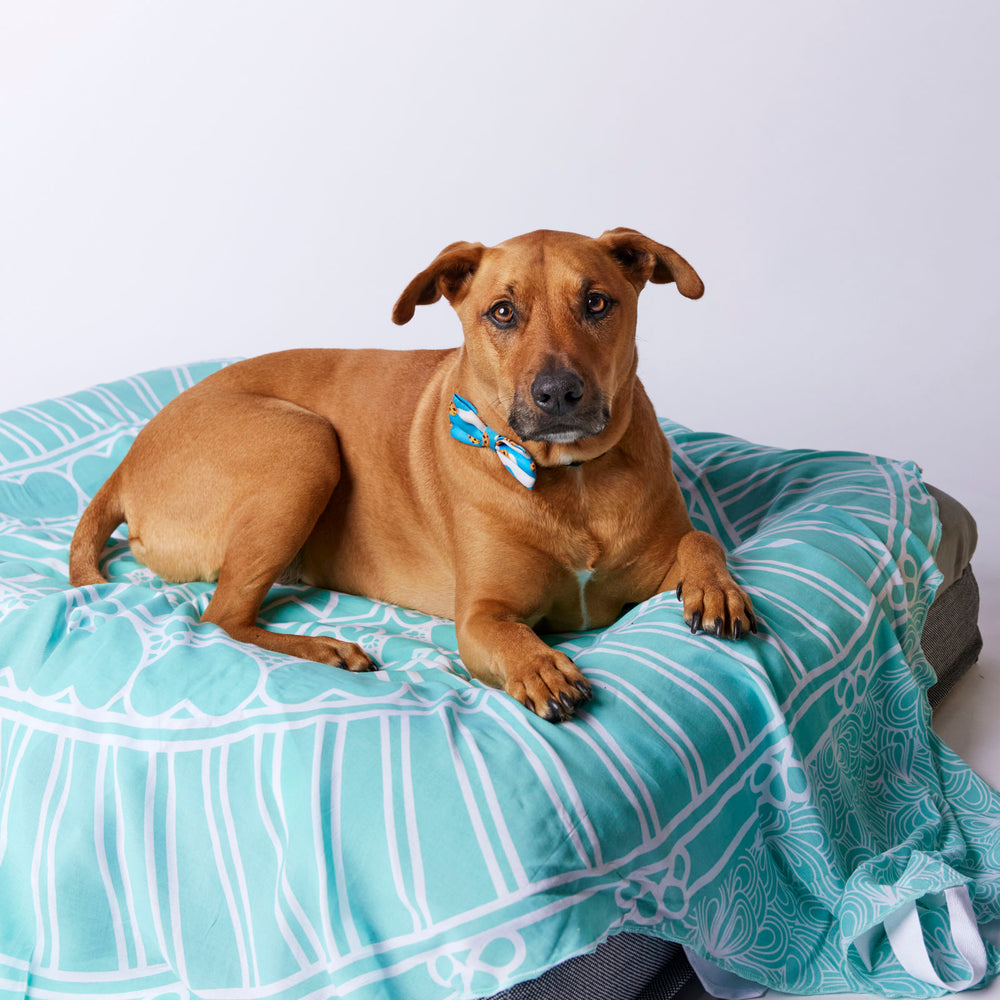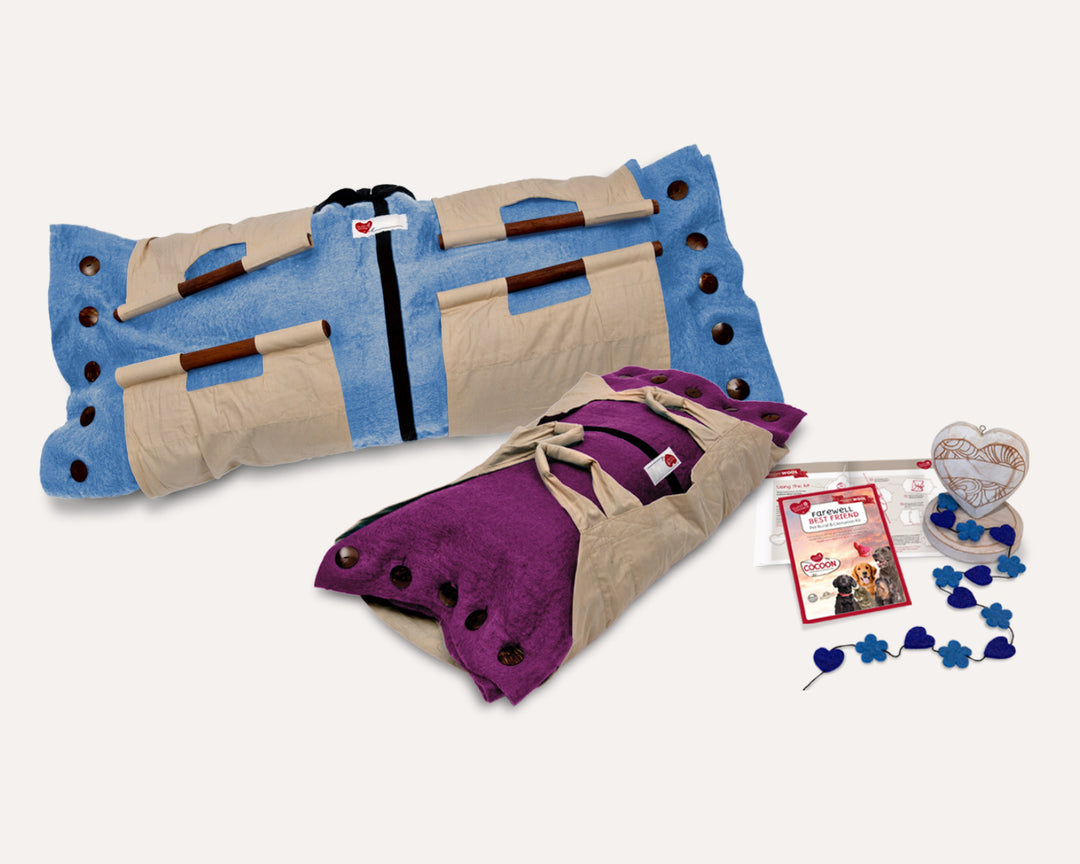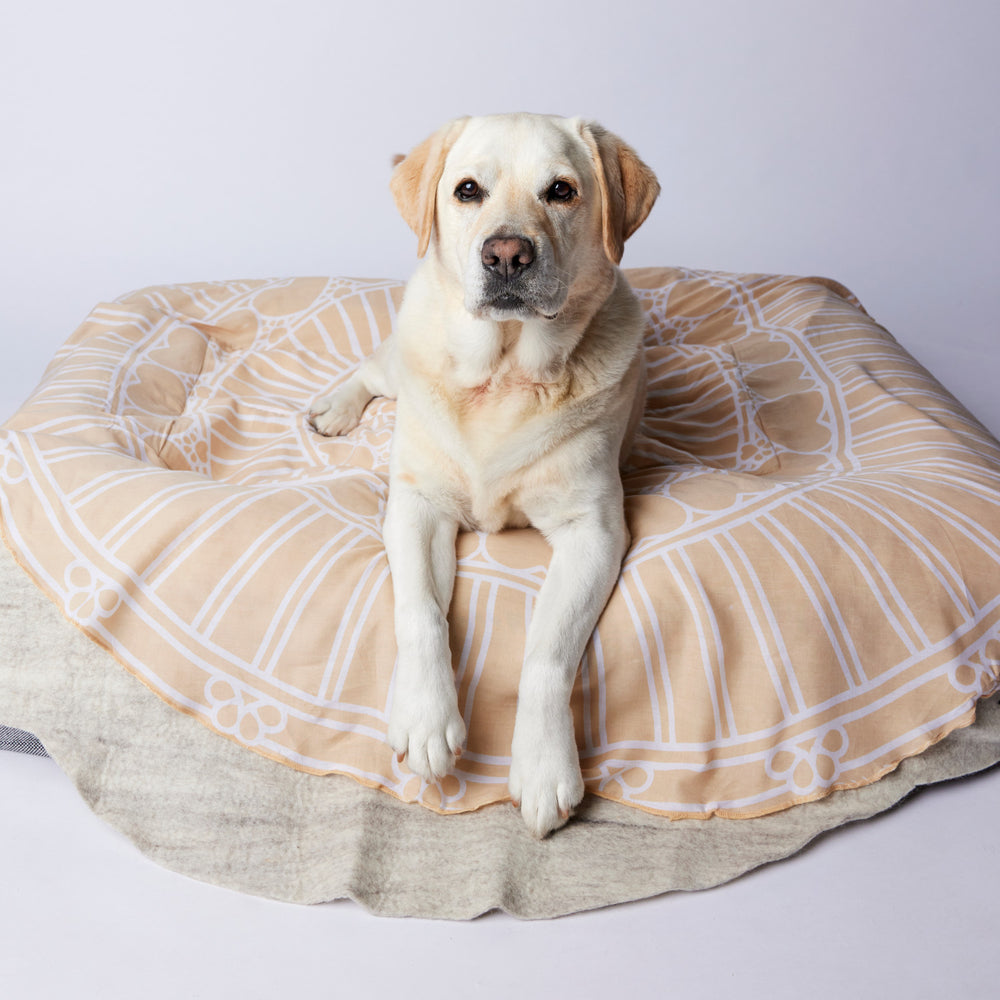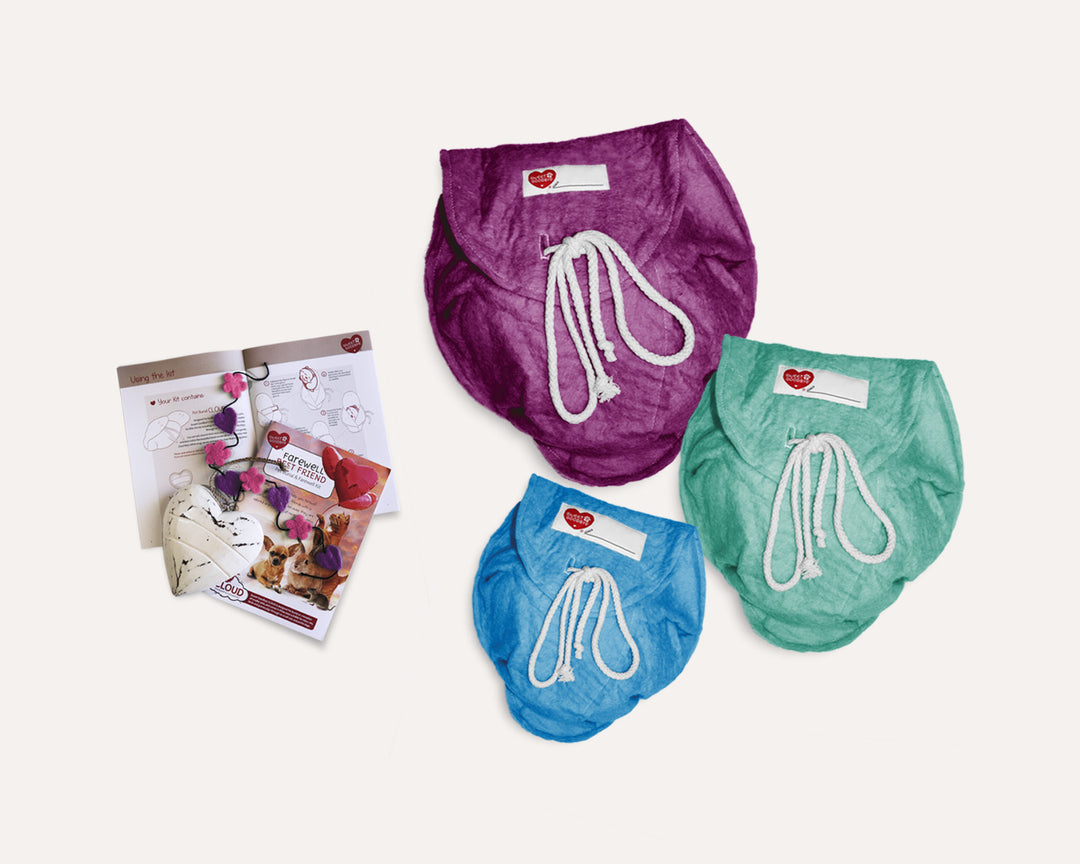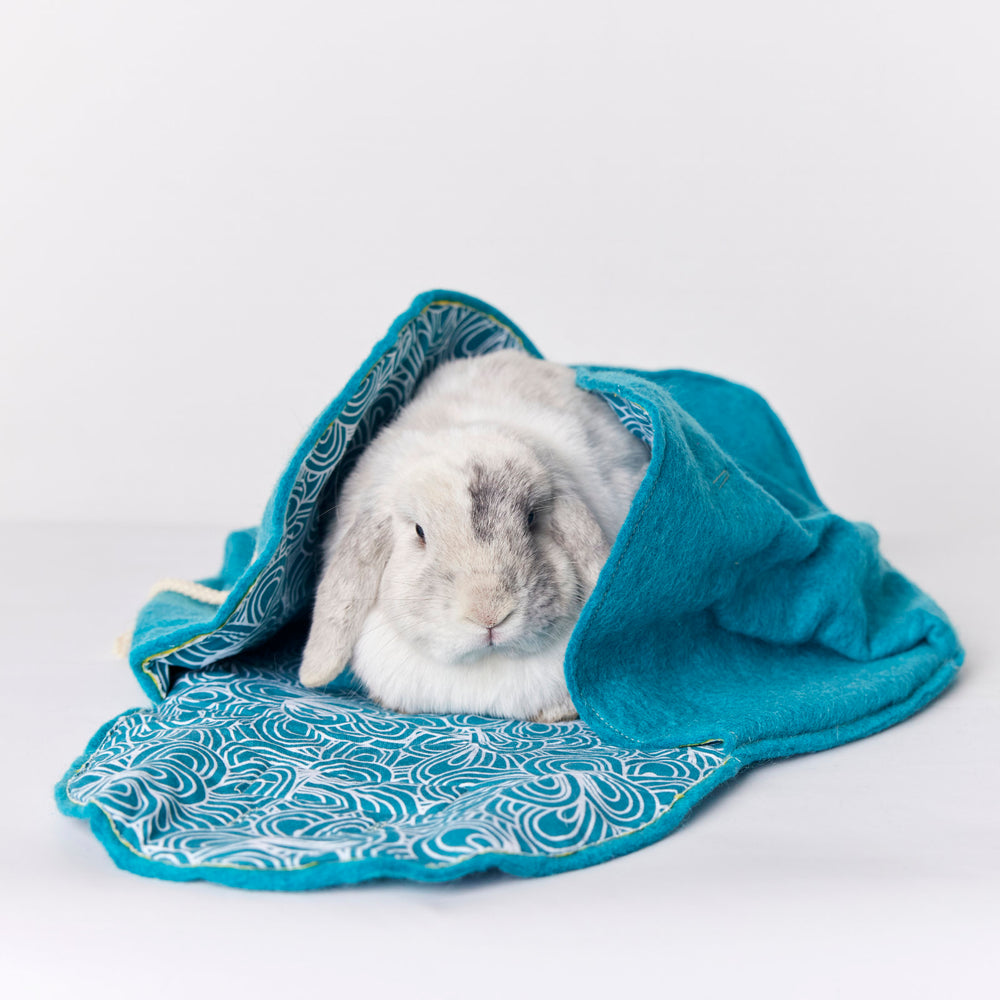Pet Euthanasia - A Step by Step Guide + Tips

The euthanasia process is very personalised, and most vets provide owners with the option of being present or not for the procedure (unless there are circumstances such as critical patients, patients receiving CPR or patients under general anaesthesia).
It's something that can be very different for everyone, and many of us don't know what to expect when the time comes. For this reason, we sat down with Chelsea Leonard, who is not only the Customer Service & Warehouse Coordinator at Sweet Goodbye - but a Registered Veterinary Nurse, who has worked in veterinary clinics across Western Australia.
Chelsea gave us a detailed journey of the process - what happens, what to expect and how to prepare.
Warning: This article explains the process of pet euthanasia in detail, and may be confronting for some pet owners.
Q: If the parent of a pet has opted not to be present, what happens?
Chelsea: Pets where the owner has opted to not be present and have consented to euthanasia, the vet/or nurse will discuss the expected procedure, discuss your options and wishes for your beloved pet after the euthanasia process, provide a consent form for you to sign and payment will be processed. The pet parent leaves and the vet takes over from there.
Q: Once the parents leave, what generally happens?
Chelsea: Your pet will be taken into the rooms where a lovely nurse will be waiting to give your pet all the love and affection, they would their own pet. We will give your pet as much affection as possible, often giving them all the treats their heart desires with peanut butter and ice cream being most animals' favourites. The procedure is completed shortly after this (your pet is never left in the cage for hours on end awaiting euthanasia). From a moral standpoint, we do not delay these procedures as we do not want to stress any pets out, nor make them uncomfortable.
Q: Are you able to walk us through the process, step by step?
Chelsea: Firstly we give your pet a sedation before doing anything. This is a subcutaneous injection (so nothing more than a mosquito bite) under the skin. The sedation will take anywhere from 10-30 minutes to take full effect; this varies with every pet. Your pet is often with a staff member in a dark room during this process creating a calm and relaxing environment for them.
Next we shave the pet's arm and either insert a catheter to maintain access to the vein or they will receive the injection/s via needle and syringe.
Your pet will often receive two injections:
First, an anaesthetic agent like they would if having surgery - which will either be white or clear. We use this to further make it a stress free environment for the pet and allowing them to be as comfortable as possible.
Following that, that they receive a lethabarb euthanasia injection. This will always be a green colour (in Australia) so it cannot be mistaken for anything else. Once they receive the lethabarb injection their heart will stop and they peacefully drift off to sleep without any pain or suffering - this all happens within a matter of minutes.
The vet will listen with a stethoscope to ensure the heart has stopped. On some occasions an additional injection of lethabarb may be required if there is any faint heart activity - this is more common in elderly pets. The vet will also check the pupils and eye reflexes.
We will then place your pet in a body storage bag and place them in either cold storage or wrap them in appropriate garments if requested.
From there, you may be coming back to take them back home with you, or they are collected by the cremation company of choice and transported back to the crematorium.
Q: What should we know if we choose to be present?
Chelsea: Once your vet has confirmed your pet has passed, you may notice it looks like your pet is still breathing. I can assure you that is not the case as the body is made of many muscles and nerves those muscles and nerves may take longer to stop. You will also notice the eyes could open again (as the eyes are made mostly of muscle’s and nerves too!) - When they don't close after death it can be quite confronting for some people.
Your pet may also soil and express pungent gases after the muscles and nerves relax and they pass - but the vet staff will account for this and discreetly discard of this.
Most importantly, once your pet has passed we will give you all the time you need to say your final goodbyes and be guided by you when you are ready to leave.
Q: What about at home euthanasia? How is that different?
Chelsea: A home euthanasia provides a much less clinical environment as many pets stress at even the scent of the vet clinic. The vet is often able to provide a more personalised approach and availability opposed to the vet clinic where unfortunately the procedure is via an appointment, so you do have limited time for the procedure to be done. Pets are more relaxed and often sleeping in their favourite spot when we attend for a home euthanasia and we wait until they pick a comfy spot and often perform the procedure where they are happy - we aren’t having to wriggle with them on a consult room table. If performing a home burial a home euthanasia takes away the daunting task of transporting your deceased pet back home which for many is an extremely confronting task.
Q: How can we prepare for saying goodbye?
Chelsea: There are many things we can do to prepare for the day our pets are euthanised.
Maybe get some family pics with your pet. If the opportunity permits, have a day out with your pet on the day of the euthanasia doing all the fun things they love, walks at the park or swims at the beach. Give them all those naughty yummy treats they’ve been told they couldn’t have before, a drive through ice cream or cheese burger is most popular, making that last day so memorable for both them and you.
For terminally ill pets waiting for us to be ready is a very hard timeline as we will never be ready to let go. Understanding your pet is key - if they can no longer do the things they have always loved it's certainly the time to start thinking and preparing to make sure the final days of our pet's lives are not painful nor are they losing the abilities of general day to day life. It is unfortunately an all too common factor we see in the vet hospital that the poor pet has suffered further than it should have because the owner was not ready to let go. A peaceful farewell is the most selfless thing you could ever do.
If you have small children attending the euthanasia, its best to try discussing what is happening beforehand as younger children often don’t quite understand and are likely to ask for a new puppy the same day - whereas young teens and adolescents will certainly have an emotional understanding of what is happening and may struggle with the grief of the loss more so without preparation. A good exercise to help the children is to draw a picture or make something for the pet they would like them to be buried or cremated with and creating a ceremony type setting - this allows the child to grieve and this is often the first death they have ever experienced and a lasting memorable moment. If having your pet cremated and ashes returned, selecting a keep sake option such as jewellery, paw prints, fur clippings etc is a great way to help children heal.
Q: Do you have one message you really want to share about the process?
Chelsea: Most of all, allow yourself time to grieve and process your emotions. For many people, losing a pet is losing a part of themselves as we are so invested in our pets and they are huge members of our families. If you can take time out of your day to day life to allow this - even return to the park or the beach the favourite spots you shared with your pet to rethink those good memories.





